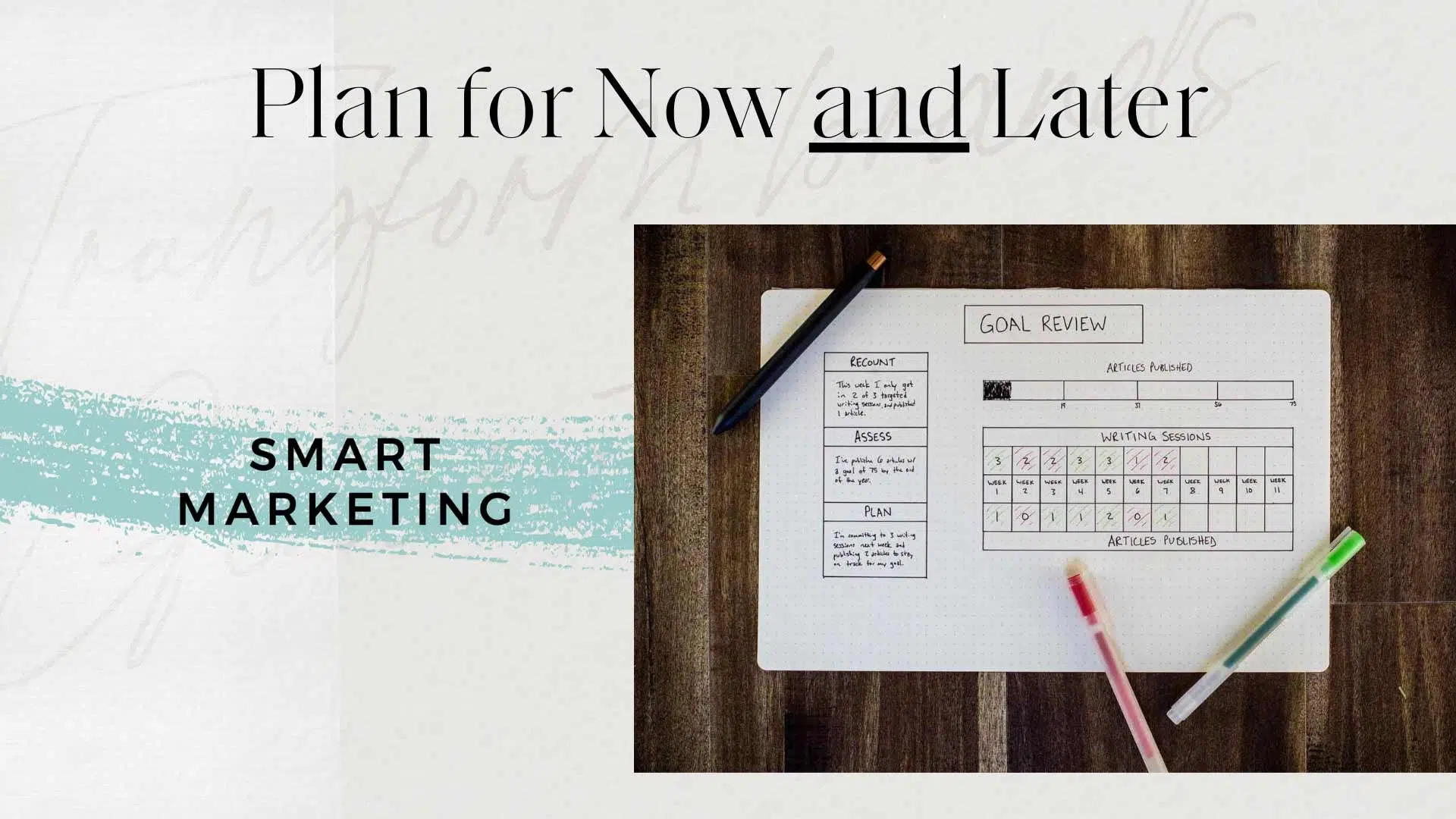Who wants to wait for results? Perhaps not whatever executive is in charge of your marketing budget. We tend to sometimes get a bit impatient when we’re talking about return on investment—the longer you have to wait, the more it feels like that money was wasted. But that is, of course, not how things work. Long-term investments pay off, despite how it may look early on. And in marketing, some of the most effective tools you have available—your brand strategy, your content strategy—are longer-term plays.
That doesn’t mean all marketing has to be planting seeds that you harvest months down the line. There are tons of things marketers can put into practice that can show results within weeks or even days. So with this knowledge, you might be asking: how do you balance between the two?
Let’s talk about balancing the long and short games in marketing, including:
- Why marketing’s role is to drive value, not cost
- Three ways to drive short-term marketing growth
- Three ways to market for long-term success
- When you should focus on now, and when to focus on later
Marketing should be a value center, not a cost center.
Marketing is really one half of your business’ revenue generating center. Or at least, it should be. Unfortunately for many marketers, marketing’s role in generating new business can be overlooked or under-measured. Because of this, marketers have leveraged a great many technologies to try and showcase the effectiveness of their efforts and divine their effects on the bottom line. But in order to really get that revenue machine moving, marketing needs to work on projects with short-term objectives and projects with long-term objectives. Let’s start with the short game.
Marketing for short-term growth
In general, short-term marketing initiatives all focus on marketing campaigns. It is about lead generation and, ultimately, sales. Here are three short-term campaigns you can use to get a quick boost to your pipeline and speed up sales.
Product- or service-specific campaigns
To use Element Three as an example, when COVID-19 hit in spring of 2020, we recognized that our team had the expertise to help our partners shift events from the physical environment they were no longer allowed to operate in to a fully digital experience. Given that basically every business event in 2020 got moved to a virtual setting, this capability was in high demand. To respond to that demand, we ran a specific campaign directly toward that virtual event service line.
Why is this a short-term campaign? Well, now we’re closing in on 2022, and while virtual events are definitely still a thing (and likely will be going forward), it’s no longer a service area that Element Three specifically is going to get involved with. We leaned in hard in 2020, but after the project served its purpose, we’ve moved on. Don’t be afraid to jump into something like this when the need exists, and be equally ready to shut it down when that need disappears.
Sales or promotions
Sales and promotions are a real balancing act for a business—running too many of them will teach your consumers that all they need to do is wait it out, and your products will go back on sale. It can also make you look cheap and commoditized. At the same time, strategically running a limited number of sales to accomplish a certain goal, such as moving last season’s inventory or driving demand during a down economy, can be a great way to get some quick wins for your business.
It isn’t just product companies that can do this, either. Free consultations, productized service offerings, and short-term agreements are all ways a service-oriented company can run a promotion to increase short-term business.
Retargeting campaigns
There’s an old adage that a consumer needs to interact with your brand at least seven times before they will make a purchasing decision. The specific number is probably a little different based on your industry and how crowded your market is, but the point holds: prospects who already have interacted with you are more likely to buy from your brand.
One of the most efficient ways to engage a warm audience is to run retargeting campaigns, showing up again in front of people who have visited your site or spent time researching your industry. These can also take the form of cart abandonment campaigns in which you send emails to customers who left your site during the checkout process. There are myriad ways to re-engage prospects, and warm leads who already know you will have a shorter time to sale than a completely new lead with no prior interaction with your brand.
Marketing for long-term growth
While it is great, and ultimately necessary, to consistently measure your marketing efforts and ensure you’re spending your budget effectively today, it is equally important to have an eye on the future. Why? Because long-term marketing efforts are the foundation on which your short-term efforts are built, and what makes them most effective. All short-term focus with no long-term consideration is what leads retail brands into a race-to-the-bottom pricing situation and what leaves service companies with no clear position in their market. Here are a few of the most important and most effective long-term marketing projects you could try.
Defining and building your brand
It’s been said before and it will be said again: strong brands win, financially, in every economy. Having a clear brand positions you appropriately in the market to win the customers you serve best, it creates clarity and ease of production for all of your marketing campaigns, and it can even support you in your quest to build the strongest team around. It’s extremely hard to measure the ROI on brand projects, but they pay dividends for years to come by making literally every other piece of your marketing significantly more effective.
Launching a new website
Many companies make the mistake of believing that a new website alone will solve their broader business challenges. It won’t. Launching a new website typically coincides with a decline in traffic and at least a few bugs. Built well, the traffic bounces back within a couple of months and the bugs are quickly sorted out—but every marketer has been through a terrible website launch. It’s draining. So don’t expect this to magically bring in new leads and sales.
However, the long-term cost of a poorly built website is hard to overstate. If the website doesn’t clearly articulate what your business does, who you serve, and why they should choose you, you will never be able to consistently win out over your competitors. Additionally, your sales team will spend a ton of time and effort working on deals that don’t make sense for your business. That’s wasted time and wasted money.
Think of your website like your storefront. If someone were to visit your store, you’d want to give them a particular experience. You’d want to create a certain mood for everyone who visits you. The same thing is true with your website. It is the storefront for your brand, and every interaction with your site needs to support your brand position and have the ability to also work hand in hand with any campaigns you’re running to elicit short-term results.
Speaking engagements and PR
Getting in front of your customers through a channel they have already chosen to trust, such as a media outlet or conference, is a great way to build your brand awareness, create greater personal rapport with your base, and eventually drive sales. It just doesn’t happen overnight. Public relations initiatives such as winning speaking engagement opportunities, being published in a particular magazine, or being a guest on a popular podcast can be expensive and time consuming—but an effective strategy here will bring in warm leads on a regular basis.
Which one matters more? Depends on the timing.
A lot of life is about timing. Open a business on the back end of a consumer trend and you’ll be frustrated with your results. Open two years earlier, and your business is naturally thriving and you look like a rock star. That’s life.
The timing for marketing initiatives is not that much different. During COVID, we heard business leaders focusing on short-term goals. Lead generation campaigns, sales and promotions—anything and everything to drive sales. It was understandable and even smart because priority one had to be maintaining the business as best as possible. As things move back towards normal, companies can focus on long-term payoff projects such as rebrands, website launches, and more developed public relations campaigns.
It is always about understanding your most critical business goals at any given time, and making the best choice to accomplish them. Put simply, find a balance of short-term success metrics and long-term targets and you should be just fine.




